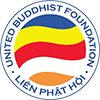Mục lục Kinh điển Nam truyền English Sutra Collection
Translated by: Unknown
Font chữ:
"And what is the development of concentration that, when developed and pursued, leads to a pleasant abiding in the here and now? There is the case where a monk -- quite withdrawn from sensuality, withdrawn from unskillful qualities -- enters and remains in the first jhana: rapture and pleasure born from withdrawal, accompanied by directed thought and evaluation. With the stilling of directed thought and evaluation, he enters and remains in the second jhana: rapture and pleasure born of composure, unification of awareness free from directed thought and evaluation -- internal assurance. With the fading of rapture he remains in equanimity, mindful and alert, and physically sensitive to pleasure. He enters and remains in the third jhana, of which the Noble Ones declare, 'Equanimous and mindful, he has a pleasurable abiding.' With the abandoning of pleasure and pain -- as with the earlier disappearance of elation and distress -- he enters and remains in the fourth jhana: purity of equanimity and mindfulness, neither pleasure nor pain. This is the development of concentration that, when developed and pursued, leads to a pleasant abiding in the here and now.
"And what is the development of concentration that, when developed and pursued, leads to the attainment of knowledge and vision? There is the case where a monk attends to the perception of light and is resolved on the perception of daytime [at any hour of the day]. Day for him is the same as night; night is the same as day. By means of awareness open and unhampered, he develops a brightened mind. This is the development of concentration that, when developed and pursued, leads to the attainment of knowledge and vision.
"And what is the development of concentration that, when developed and pursued, leads to mindfulness and alertness? There is the case where feelings are known to the monk as they arise, known as they persist, known as they subside. Perceptions are known to him as they arise, known as they persist, known as they subside. Thoughts are known to him as they arise, known as they persist, known as they subside. This is the development of concentration that, when developed and pursued, leads to mindfulness and alertness.
"And what is the development of concentration that, when developed and pursued, leads to the ending of the effluents? There is the case where a monk remains focused on arising and falling away with reference to the five clinging-aggregates: 'Such is form, such its origination, such its passing away. Such is feeling, such its origination, such it’s passing away. Such is perception, such its origination; such it’s passing away. Such are fabrications, such their origination, such their passing away. Such is consciousness, such its origination, such its disappearance.' This is the development of concentration that, when developed and pursued, leads to the ending of the effluents.
"These are the four developments of concentration.
"And it was in connection with this that I stated in Punnaka's Question in the Way to the Far Shore:
'He who has fathomed the far and near in the world,
for whom there is nothing perturbing in the world --
his vices evaporated, un-deserving, untroubled, at peace --
he, I tell you, has crossed over birth aging.'"
Close
Close
